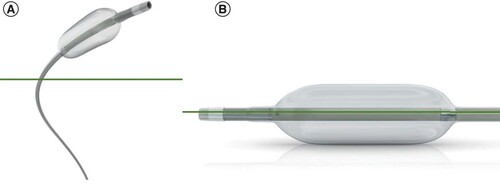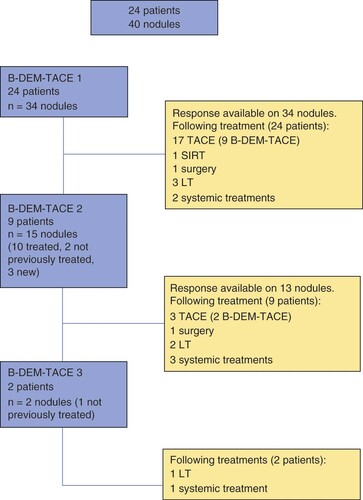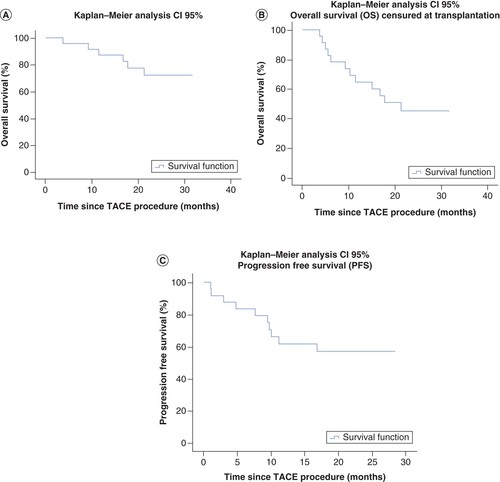Figures & data
The figure shows an entire inflated microballoon catheter (A) and the inflated balloon (B).
Reproduced with permission from Terumo Europe NV, Leuven, Belgium.

Table 1. Baseline and transarterial chemoembolization characteristics.
Available responses are shown in the right side of the image.
B-DEM-TACE: Balloon-occluded transarterial chemoembolization using drug-eluting microspheres; LT: Liver transplantation; SIRT: Selective internal radiation therapy.


